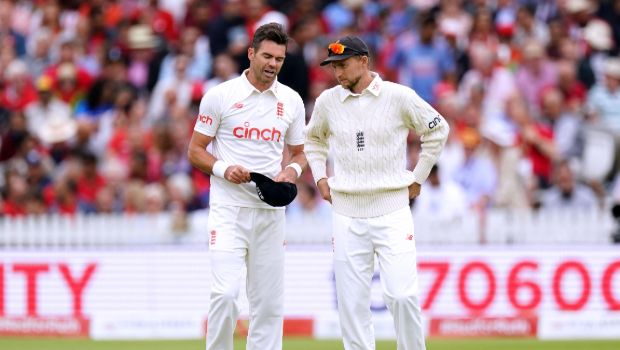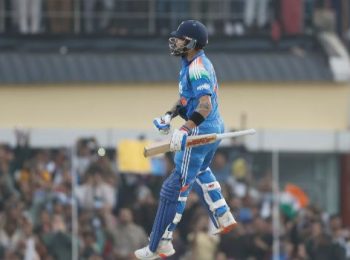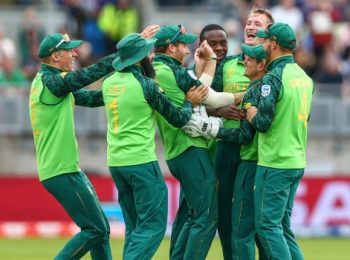The recently concluded five-match T20I series between India and England set the tone for a highly anticipated ODI face-off. India walked away with the upper hand, but not without England staging a spirited comeback in the last two games. England fought back strongly in the latter stages, winning two of the last few games and levelling the contest in terms of momentum. Had the final tally been 4-1 to India, the psychological advantage would have been much greater. But with the series ending as it did, the playing field feels more even as both teams now shift focus to the ODIs. A different format brings changes to both squads, providing fresh dynamics.
For India, Pratika Rawal is expected to open the batting alongside Smriti Mandhana, replacing the more aggressive Shafali Verma. Rawal has been impressive since her debut in December 2024, averaging nearly 64 in her 10-11 games so far. She brings a slightly more composed approach compared to Verma’s explosive starts. Whether Verma returns for the World Cup remains uncertain, but I believe she is still very much in contention.
India’s top order will need careful calibration. Mandhana and Rawal will likely open, followed by Jemimah Rodrigues, who is too talented to be left out for long. Whether she bats at three, four, or even five, India have depth and flexibility. The middle order features options like Deepti Sharma and Richa Ghosh, giving India several ways to configure their line-up.
This three-match ODI series offers crucial preparation time before the World Cup. While it’s slightly surprising that the schedule wasn’t reversed for this series, with five ODIs and three T20Is, given the 50-over World Cup is closer than the next T20 World Cup, it still serves as vital groundwork for both teams.
In the bowling department, India are expected to rely heavily on spin again. Shree Charani, emerging from a successful WPL season, was a breakout star in the T20Is. Her slow left arm spin, especially against England’s predominantly right-handed batting line-up, was highly effective. She claimed 10 wickets in the T20I series, a promising sign for India.
One of India’s key advantages from the T20Is was their bowling and fielding. They consistently out-bowled and out-fielded England, and if they can extend that discipline over 50 overs, India should start as favourites. The batting line-up is in good shape. The challenge remains whether India can control England’s batters, particularly if England find ways to counter spin.
England’s squad for the ODIs will see return of some names. Amy Jones and Tammy Beaumont are expected to open, having built formidable form with two 200-run partnerships against the West Indies recently. Amy Jones seems better suited at the top of the order rather than batting lower down, as she often does in T20s.
England will head into the ODI series with a much stronger line-up, especially with Nat Sciver-Brunt returning to the squad. Emma Lamb is also likely to be in contention after missing the T20 series. The bowling unit is set to be reinforced too, with Kate Cross expected to return and take the new ball. Alice Davidson-Richards is back in the squad, although she may not feature in the playing XI.
One of England’s main concerns remains their approach in the powerplay. Under head coach Charlotte Edwards, there has been a clear emphasis on being “greedy” — encouraging batters to score more runs and play positively. While that mindset is refreshing, England have sometimes struggled to find the right balance between aggression and caution, particularly early in the innings.
Against the West Indies, for example, England were often too passive in the first six overs and only accelerated later in the powerplay or the middle phase. This approach may not hold up in high stakes matches, especially at the World Cup where setting the tone early is critical.
In this ODI series, England are expected to push harder in the powerplay, capitalizing on the depth and quality of their top order. With the experience and firepower, they possess, the top order remains one of England’s biggest strengths, but unlocking its full potential will depend on a more proactive mindset from the outset.
Sophie Ecclestone, Charlie Dean, and Linsey Smith form a formidable trio of spinners, but realistically, England may only be able to field two of them if they want to maintain a balanced attack. Lauren Filer and Lauren Bell are expected to lead the pace attack, and both are must-picks given their wicket-taking abilities. That leaves a question mark over whether Kate Cross will make the XI, especially since Nat Sciver-Brunt is unlikely to bowl in this series.
If Sciver-Brunt doesn’t bowl, England might opt for three spinners, but that could come at the cost of a seamer like Cross. Pitch conditions will likely dictate this choice — on spin friendly surfaces, they might lean towards the extra spinner. If one spinner is to be left out, Linsey Smith seems the most likely candidate, with Dean and Ecclestone near-automatic picks.
This balancing act will be far easier to manage during the World Cup when Sciver-Brunt is expected to resume bowling. Her inclusion as the third seamer would allow England to play two frontline pacers alongside three spinners, offering both depth and variety in the bowling attack. For now, though, this ODI series presents a crucial opportunity for England to experiment and find the right combination.
Another strategic factor is the boundary sizes. In the T20s, the boundaries were pushed back significantly, aiding the spinners and making rotation of strike essential. Expect similar boundary settings in the ODIs, which will challenge both teams to find gaps, run hard, and build partnerships through twos and threes.
The series starts in Southampton, followed by a marquee clash at Lord’s — always a special venue, especially after the drama of the last India-England match there involving the Deepti Sharma run-out incident. It sets the stage for another gripping encounter.
Overall, it’s unfortunate the series is limited to just three games, especially with the World Cup looming. Both teams could have benefitted from more matches to fine-tune their combinations. Still, the ODIs promise to be a fiercely contested battle between two evolving sides gearing up for the bigger stage.



























